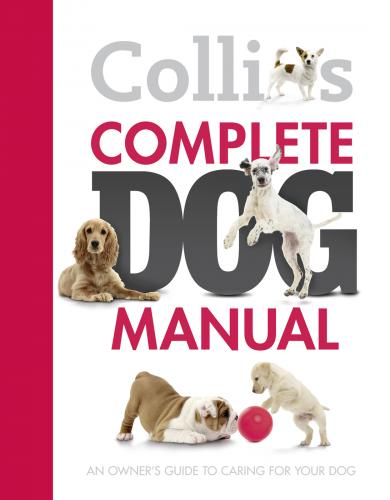(Eric Isselee)
A happy, laid-back companion – an intelligent dog with a peaceful nature, the Beagle can adjust well to town or country life. It readily accepts children as part of its family and likes to feel a member of the human pack. Beagles are happy, easy-going and people-orientated, adapting well to most environments.
History
A small hound dating from Norman times, the Beagle evolved and was developed from the Talbot Hound and the Southern Hound. A further mix with small hounds produced the breed first recorded by name in the ‘Privy Accounts’ of Henry VIII. As the larger hunted animals became scarce, huntsmen developed the Beagle to hunt hares, which they do with enthusiasm and skill.
Description
Small to medium in size, two varieties of Beagle exist in the United States, one not exceeding 33 cm (13 in) in height whereas the other is taller but does not exceed 38 cm (15 in). However, in Britain, 33–40 cm (13–16 in) is acceptable. Tri-colours are most popular, with a black back, tan sides and top of legs, and a white chest, stomach and lower legs. Having short legs, it works more slowly than the Harrier or English Hound but hunts cheerfully with its flag (tail) held high and enters dense cover with equanimity.
Fact File
Group: Hound
Country of Origin: England
Male:
33–40 cm (13–16 in)
Female:
33–40 cm (13–16 in)
Coat: Short, dense coat that can withstand the cold and wet.
Life Expectancy: 12–15 years
Guarding Instinct: Will warn but no aggression.
Temperament & Grooming
Temperament: Easy-going, friendly and intelligent dog with a peaceful nature, the Beagle can adjust well to town or country life. Beagles are happy, easy-going and people-orientated, adapting well to most environments.
Grooming: A weekly brush and a polish with a chamois leather keeps them looking good.
Exercise & Feeding
Exercise: Beagles need plenty of exercise, which must be augmented with playing in the garden. However, they are not the easiest dogs to train and require a lot of kindness and patience.
Feeding: They eat well and care should be taken to keep them in athletic form as they have a tendency to become overweight.
Health Problems
Rare hip problems. An eye problem under investigation. Otherwise, a hardy, long-lived companion.
Dachshund
(Julia Remezova)
A most adaptable breed, living with equal ease in town or country. Intelligent and easily trained, it is sometimes spirited, always humorous. The Dachshund is a game little dog that loves hunting. All varieties adore activity and need free running and play daily. Each variety has its miniature equivalent. The Smooth-haired Dachshund makes a lively companion and pet.
History
Mystery veils the real origins of this breed. Its German name is Teckel, a word that is found at the base of an ancient Egyptian sculpture of familiarly long-bodied, short-legged dogs. ‘Dachshund’ means ‘badger dog’ and it is one of the oldest hunting breeds in Germany, mentioned in records since the fifteenth century. Few, if any, Dachshunds hunt in Britain but they have not lost their instincts. A few are still used in Germany and in France, particularly the very small variety know in Germany as the Rabbit Dachshund.
Description
A long, low dog known as the ‘sausage dog’, it is full of life and always alert. All colours are acceptable but only small white patches on the chest are permitted. The different sizes and coats have evolved since around 1850 and today the most popular variety is the Miniature Long-haired Dachshund. They will go underground but are in danger of getting trapped. At one time, the Standards were general hunters of foxes, deer and even boar.
Fact File
Group: Hound
Country of Origin: Germany
Miniatures and Standards:
13–25 cm (5–10 in)
Coat: Short, dense coat that can withstand the cold and wet.
Life Expectancy: 12–15 years
Guarding Instinct: Distrustful, all sizes will warn off strangers.
Temperament & Grooming
Temperament: Easy to live with and very affectionate. Playful and mischievous – sometimes stubborn, as befits a hunting dog. Long-haireds are more independent than Wires and Smooths, which are more demonstrative.
Grooming: Whereas the Smooths need a soft brush and polish weekly, the Long-haireds need brushing and combing bi-weekly, and the Wire-haireds should be hand stripped every three months.
Exercise & Feeding
Exercise: Needs plenty, plus play and hunting in woods.
Feeding: There are no special feeding requirements.
Health Problems
All varieties can have back problems, and they should not be allowed to run up and down steps or stairs. Only buy Miniature Dachshunds from eye-tested parents.
(otsphoto)
(Jana Behr)
Boxer
(Gelpi JM)
Bred to be a companion, guard and show dog, the Boxer’s intelligence and brightness of spirit endear him to most nationalities. An alert house guard with a booming voice but never vicious. As a member of a family, the Boxer is truly a fun dog, very affectionate and loyal to the end. The Boxer’s aggressive appearance belies its soft nature – the right dog for the right family.
History
The Boxer is a German manufactured breed derived from the ancient Mastiff-style dog that accompanied the Roman legions across Europe. Like several other big breeds, Boxers have, in their lineage, the blood of the Bullenbeiser – dogs bred for the purpose of bull baiting. However, the Boxer did not come to the fore until around 1890, after bull baiting was outlawed.
Description
